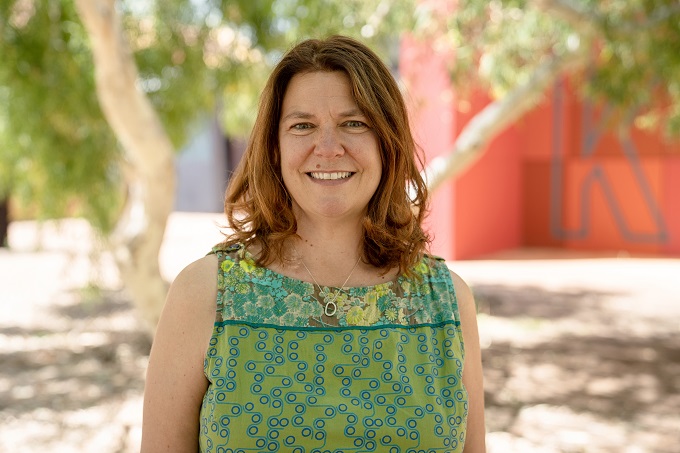Prioritising wellbeing for effective education
We look at the important role schools play in fostering healthy wellbeing in students, staff, families and the whole community.

As spaces where children spend most of their day, schools have an active role in promoting wellbeing, not only for children and staff, but for the whole community.
After all, a happy and healthy student is a happy and healthy member of the family. Happy and healthy families are the building blocks of happy and healthy neighbourhoods and community groups.
But protecting and nurturing wellbeing is not only an important part of community health, it’s also essential to promote teaching and learning.
According to the Department of Education, there is evidence of “strong linkages between student safety, wellbeing and learning outcomes”.
With this in mind, educators might look to the Australian Student Wellbeing Framework as the first port-of-call. Its five elements, as outlined by the Department of Education, are leadership, inclusion, student voice, partnerships, and support.
Leadership acknowledges the powerful part that school leaders play in creating a positive school environment where others are respected and valued. Effective practices include school leaders consulting with the community and students to create shared visions and values. Leadership is also responsible for the safety and wellbeing of the community, and thus should guide communities toward a shared vision for the school.
Inclusion means that all members of the school community are given the opportunity to participate in building a welcoming school culture that enables positive and diverse relationships. Here, effective practices include a robust system for recognising staff, student and community contribution – this enables community connectedness.
Student voice means having students be active participants in shaping their learning and social environments. This may look like multiple opportunities for students to participate in decision making, and explicitly teaching social and emotional skills.
Practical examples of teaching social and emotional skills may include short meditation or journaling sessions for students. This encourages students to name and understand emotions, thereby supporting healthy communication and relationships. Short mindfulness exercises like guided meditations and journaling have also been shown to help students with their self-management skills, and may even help reduce bullying.

American author Janice Houlihan from the University of Massachusetts theorises that “mindfulness practices help the bully, victim, and any witnesses involved develop a deeper awareness of themselves, resilience, compassion, and a greater ability to regulate their emotional responses.”
The next key element of wellbeing, according to the framework, is partnerships. This means seeking community input to the school, supporting connections between students and families and community groups. Leaders may wish to consult with community organisations and agencies, including building partnerships with Aboriginal and Torres Strait Islander families to ensure cultural inclusiveness.
Finally, support means that each stakeholder supports others on their journey to understanding wellbeing and how wellbeing in turn supports teaching and learning. This may look like engaging in professional development to ensure consistent and effective application of the school’s direction toward wellbeing and positive behaviour.
Addressing wellbeing in schools through implementing policies and effective practises is one thing, but how can school leaders know if these policies are having impacts on the actual wellbeing of their communities? Educators may look for local initiatives, or else come up with their own methods like self-administered surveys. These have the advantage of being customisable to answer specific questions educators may have about their school community, such as connectedness or inclusivity.
And while schools can make every effort to support student, staff and community wellbeing, this is not always enough. If you or a student or colleague is struggling, it is important to reach out to your GP or other health care professional.
School News spoke to some companies that are collaborating with schools to foster positive wellbeing.
The Langley Group Institute (RTO40655) has supported many schools in building whole-school wellbeing, from parent education sessions, positive leadership development, social and emotional learning to build resilience, positive HR practices, wellbeing assessment at all levels and embedding a strengths-based approach across the whole employee and student lifecycle.
The team believe emphasising the importance of personal development and resilience helps students and teachers build the skills necessary to cope with life’s inevitable ups and downs. Teaching strategies for managing setbacks and encouraging a growth mindset instil a positive approach to challenges.
The Langley Group Institute helps schools in educating for flourishing. By fostering positive wellbeing in schools, educators play a pivotal role in shaping students’ academic success and their lifelong happiness and fulfilment. Creating an environment that prioritises mental, emotional, social and physical health sets the foundation for a generation of resilient and flourishing individuals.
The 11069NAT Diploma of Positive Psychology and Wellbeing has supported many educators to build whole school wellbeing. Now, the Langley Group Institute has launched the 11250NAT Certificate IV in Wellbeing Science, open to anyone 16+ who wants to build their wellbeing and gain a government-accredited qualification. Both qualifications are the first of their kind in Australia and have strong proven results for thousands of graduates.

Furnware has partnered with a new product brand, Mindfull. The company evolved from many conversations with schools, parents, and occupational therapists. Mindfull makes learning spaces more personalised, by creating stimulation through movement and tactile materials, as well as sanctuary through visual and acoustic screening. This enables learners to find space within the classroom to interact and collaborate, or seek refuge, achieving separation without isolation.
Hutchins School in Tasmania was one of the first schools to incorporate the new Mindfull range into its learning spaces. The feedback has been very positive, with plans to roll out Mindfull throughout the rest of the school in 2024.
As we move into 2024, Furnware is excited to collaborate with schools across Australia to help more of our learners to ‘find their happy space’.







